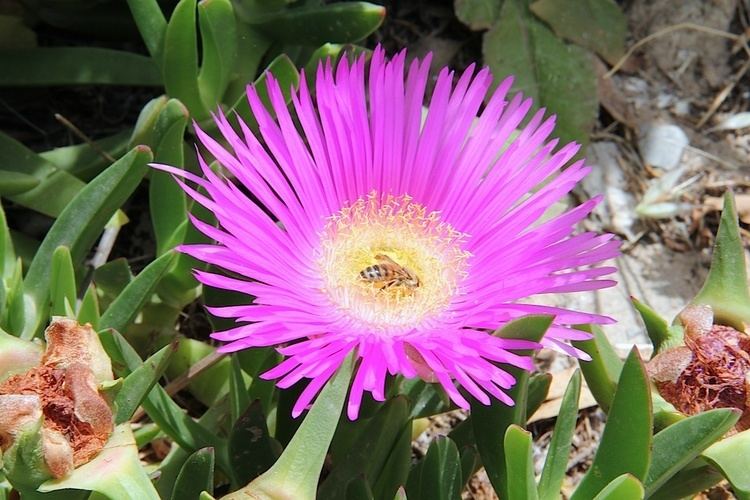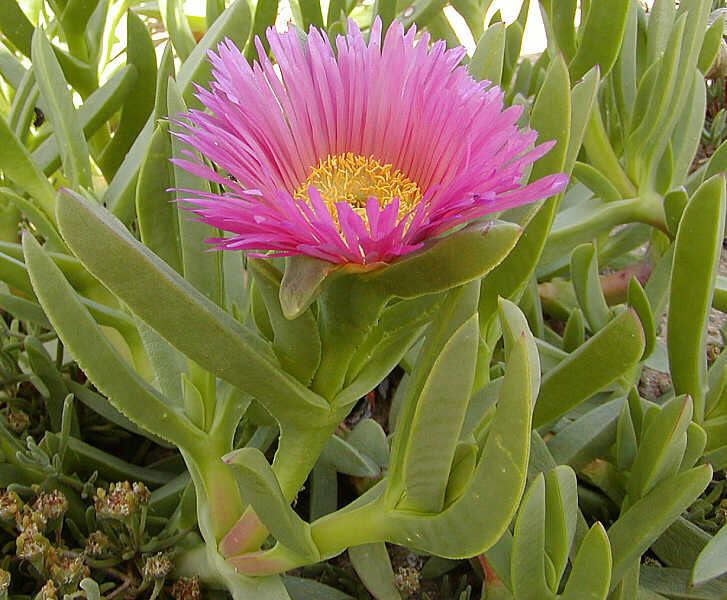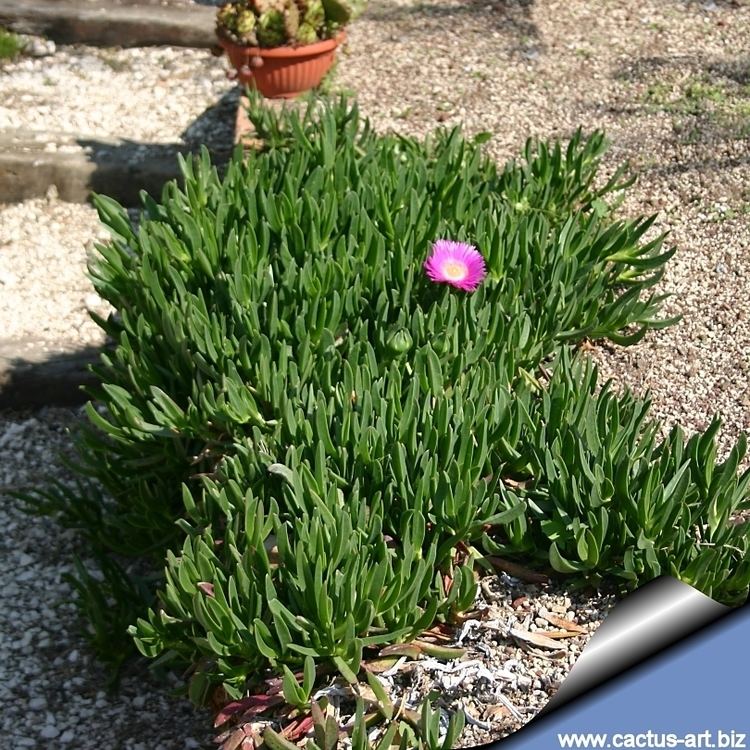Family Aizoaceae Higher classification Stone plants | Scientific name Carpobrotus Rank Genus | |
 | ||
Lower classifications Carpobrotus edulis, Carpobrotus chilensis, Carpobrotus rossii, Carpobrotus glaucescens, Carpobrotus acinaciformis | ||
Ice plant carpobrotus edulis invasive crafted species
Carpobrotus, commonly known as pigface, ice plant, and Hottentot plant, is a genus of ground-creeping plants with succulent leaves and large daisy-like flowers. The name refers to the edible fruits. It comes from the Ancient Greek karpos "fruit" and brotos "edible".
Contents
- Ice plant carpobrotus edulis invasive crafted species
- my crystal collection and planting succulent carpobrotus edulis
- Distribution and habitat
- Ecology
- Uses
- Medicinal and nutritional value
- Species
- References

The genus includes some 12 to 20 accepted species. Most are South African, endemics, but there are at least four Australian species and one South American.

my crystal collection and planting succulent carpobrotus edulis
Distribution and habitat

Various Carpobrotus species are invasive introduced species in suitable climates throughout the world. The harm they do is variable, and sometimes hotly debated, when balanced against their value as firebreaks and as food for wildlife.
Ecology

The fruit of various species of Carpobrotus is eaten by many animals and birds that also spread its seed. In this way the seeds of invasive species in for example the United States, are spread by bears and deer.
Uses
Carpobrotus acinaciformis, known in the United States as icicle plant, strand ivy, Cape fig, Hottentot fig, and sour fig, is often used for groundcover due to its rapid growth, dense habit, and resistance to fire. Carpobrotus are also drought resistant.
Medicinal and nutritional value
C. glaucescens is noted for its salty fruit, a rare property in fruits.
Carpobrotus leaf juice can be used as a mild astringent. Applied to the skin, it is a popular emergency treatment for jellyfish and similar stings. When mixed with water it can be used to treat diarrhea and stomach cramps. It can also be used as a gargle for sore throat, laryngitis, and mild bacterial infections of the mouth. It can also be used externally, much like aloe vera, for wounds, mosquito bites and sunburn. It is also used to treat skin conditions. It was a remedy for tuberculosis mixed with honey and olive oil. The fruit has been used as a laxative.
Species
The following list excludes names regarded as synonyms, but includes species whose status still is unresolved.
